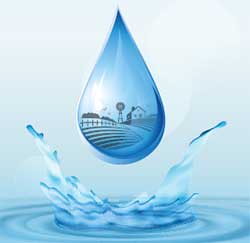30 Indian Cities Under ‘Water Risk’ by 2050
Why in NEWS ?
- According to the report of WWF Water Risk Filter nearly a third of the 100 cities in the world susceptible to ‘water risk’ are in India.
About
- 30 Indian cities will face ‘water risk’ by 2050.
- Jaipur topped the list of Indian cities, followed by Indore and Thane. Mumbai, Kolkata and Delhi also featured on the list.
- The global list includes cities such as Beijing, Jakarta, Johannesburg, Istanbul, Hong Kong, Mecca and Rio de Janeiro.
- China accounts for almost half the cities.
- The 100 cities that are expected to suffer the greatest rise in water risk by 2050 are home to atleast 350 million people people as well as nationally and globally important economies.
- Globally, populations in areas of high-water risk could rise from 17% in 2020 to 51% by 2050.
What can be done?
-
The Smart Cities initiative in India could offer an integrated urban water management framework combining urban planning, ecosystem restoration and wetland conservation for building future ready, water smart and climate resilient cities.
-
Urban watersheds and wetlands were critical for maintaining the water balance of a city, flood cushioning, micro-climate regulation and protecting its biodiversity.
-
There have been groups that have come together to revive wetlands such as Bashettihalli wetland in Bengaluru and the Sirpur Lake in Indore.
-
Urban planning and wetland conservation needs to be integrated to ensure zero loss of freshwater systems in the urban areas.
WWF Water Risk Filter
-
Launched in 2012, the Water Risk Filter is a practical online tool that helps companies and investors assess and respond to water-related risks facing their operations and investments across the globe.
-
Developed by WWF and the German finance institution DEG, the Water Risk Filter has become a leading and trusted source of water risk data for thousands of users – from multinational corporations and SMEs to financial institutions – which have used it to evaluate hundreds of thousands of specific sites.
-
After a major upgrade in 2018 and a wealth of new functions, the Water Risk Filter 5.0 enables companies and investors to Explore, Assess, Value and Respond to water risks. Lately, the Water Risk Filter provides scenarios of water risks for 2030 and 2050, integrating climate and socio-economic changes in three different pathways.
Worldwide Fund for Nature
-
It is an international non-governmental organization founded in 1961. It works in the field of wilderness preservation and the reduction of human impact on the environment.
-
It is the world's largest conservation organization , with over five million supporters worldwide, working in more than 100 countries and supporting around 3,000 conservation and environmental projects.
-
It aims to “stop the degradation of the planet's natural environment and to build a future in which humans live in harmony with nature."
-
The Living Planet report is published every two years by WWF since 1998. It is based on the Living Planet Index and ecological footprint calculation.
-
WWF has launched several notable worldwide campaigns, including Earth Hour and Debt-for- Nature Swap , and its current work is organized around these six areas: food, climate, freshwater, wildlife, forests, and oceans.








